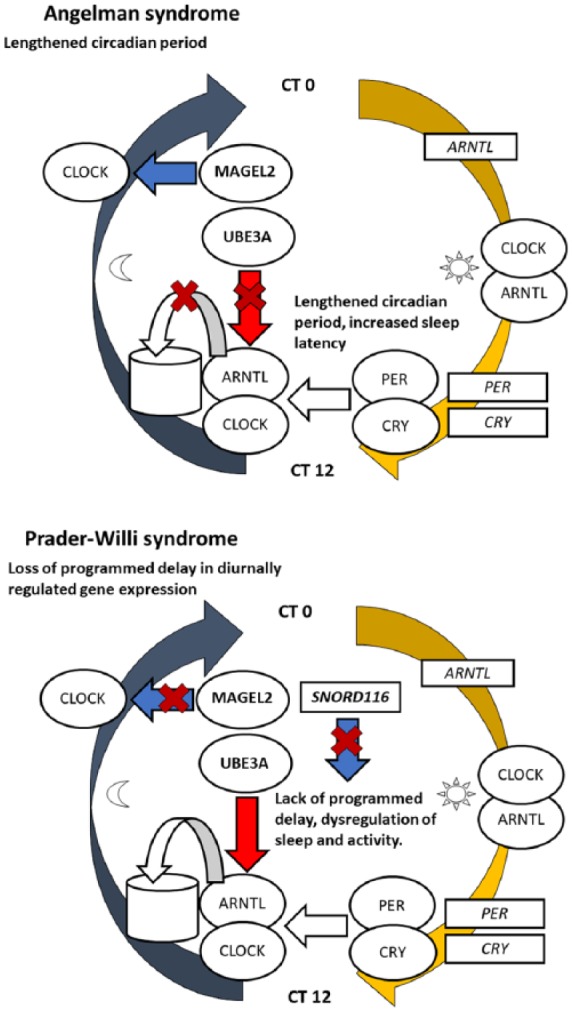Figure 4.

The circadian clock mechanism and its interactions with the genes involved in the Prader–Willi and Angelman syndromes. The Clock and Arntl (Bmal1) proteins, marked as round shapes, start to accumulate in the nucleus after midday and activate the transcription of the Per and Cry genes (marked as rectangles) early in the evening. Per and Cry proteins accumulate in the nucleus by nighttime and repress the transcriptional activity of Clock and Arntl, simultaneously preventing their own transcription. Imprinted genes are also involved in the regulation of circadian rhythms. UBE3A regulates the turnover of BMAL1 via ubiquitination (shown as a simplified diagram of ubiquitination and protein recycling), while MAGEL2 has been hypothesized to mediate the cytoplasmic accumulation of Clock prior to nuclear accumulation of both Clock and Arntl.
